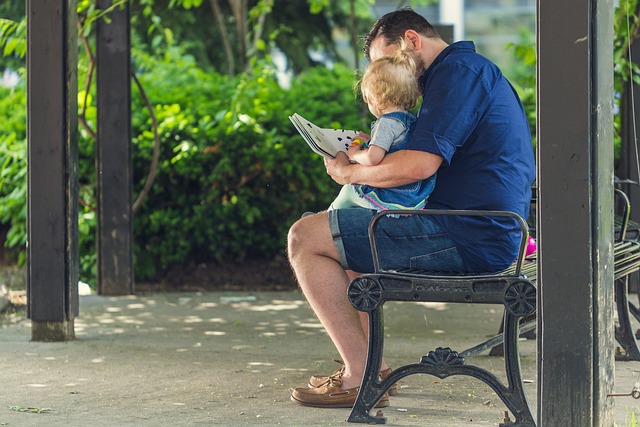That Warm, Fuzzy Feeling Has a Name: Kama Muta

Some emotions you seem to recognize the moment you feel them – you know when you’re angry, surprised, embarrassed or jealous. And yet you probably can’t name one of life’s most wonderful emotions (in fact, even psychologists have only recently begun to study it). It’s hiding in plain sight: without realizing what you were feeling, you’ve probably experienced this same emotion in diverse situations such as when reunited with family or others you love; in worship; at a wedding; when you first held your newborn baby; when your team won a championship; or when a kitten climbed into your lap, licked your hand, curled up and fell asleep there. You might have felt it marching in a social-movement demonstration, or participating in a support or recovery group.
Now think back. At any of those times, was there a wonderful warm, fuzzy feeling in your heart? Did you cry tears of joy? Were you choked up with happiness? Did you get goosebumps or chills of delight? Feel so buoyant you were almost floating? Perhaps you put your hand on your heart and said ‘Awww!’ If you had these sensations, you were probably feeling this mysterious emotion. Next, you probably wanted to hug everyone, or call your grandparents to tell them how much you love them.

Although there is no exact word in any everyday language for this emotion, English speakers seeking to name the feeling might call it, depending on the context: being moved, touched, team pride, patriotism, being touched by the Spirit, burning in the bosom, the feels, or, when evoked by a memory, nostalgia. However, none of these terms captures precisely what the emotion is – and using any one of them conceals the fact that though it has many names, it is one emotion. So we coined a scientific term for it, ‘kama muta’, borrowed from the ancient Sanskrit where it meant ‘moved by love,’ written in the beautiful Devanāgarī script as काममूत.
Kama muta is recognizable by six co-occurring features:
- It is evoked by the sudden intensification of communal sharing – that is, sudden ‘love’ or kindness;
- It is brief (typically less than a minute or two, though it can repeat in rapid succession);
- It feels good (though it can occur in the context of other, negative emotions);
- When intense, it is often accompanied by the same set of physical sensations: a warm, fuzzy feeling in the centre of the chest; moist eyes or tears; being choked up (a lump in the throat); chills or goosebumps; and often a smile and putting the palm(s) on the chest, sometimes saying ‘Awwww!’;
- It motivates devotion and compassion to communal sharing – also known as ‘loving kindness’;
- Depending on the language and the context, it is often labelled with the terms mentioned above.
In several experiments with more than 10,000 participants in 19 nations in 15 languages, involving observation, interviews, diary studies, comparative ethnology and history, we have shown that these six features frequently co-occur, in the specific contexts mentioned above, and many others where love ignites.
We’ve conducted observational research in churches and mosques, in poetry lounges and memorial sites, at Alcoholics Anonymous and eating-disorder residential treatment programmes, in birth centres and with new parents. We have explored hundreds of historical sources and hundreds of ethnographies from diverse cultures all over the world.
Wherever we’ve looked, in myriad contexts and cultures, we’ve found the same pattern: kama muta and its six features are consistently evoked by viewing videos of sudden connection or kindness, confirming that it is one emotion. So, for example, when we show participants short videos that involve love springing up between fictional characters, the participants tend to get warm feelings in the heart, often along with tears or goosebumps, just as we find in participant observation in Sufi and Pentecostal services when the worshipper suddenly feels divine love.
Kama muta is closely related to, but not the same as, love. Love is an enduring sentiment, whereas kama muta is the momentary emotion that occurs when love ignites. That is, you feel kama muta when new love emerges (such as a first kiss, or someone shows you kindness), or existing love suddenly becomes salient, or a sense of belonging, connection, and identity emerges, for example at a march or demonstration. The suddenly created or intensified love can be romantic, platonic, or religious. It can be with one person, with a family or team, or with the entire Earth. It can be the gratitude for an unexpected kindness, or the sense of connection and belonging at a warm welcome.
That feeling is all around us. Social media posts that evoke strong kama muta often go viral – for example, cute kittens, puppies and special animal friendships. The popularity of some literature (especially sentimental novels) and movies (especially romantic comedies) is, we suspect, often largely due to the kama muta they evoke. Kama muta is often the essence of oratory and poetry such as William Shakespeare’s sonnets and Matsuo Bashō’s haiku. Many kinds of music evoke it in multiple ways, as do certain experiences of oneness with nature. It appears to be a universal emotion, present in diverse cultures throughout history.
Many social practices have culturally evolved via their capacity to evoke this appealing emotion. The more a form of worship, a type of music or a narrative evokes kama muta, the more people seek it out, tell others about it and reproduce it. When a Pixar movie, a wedding practice or poetry or photographs evoke kama muta, they spread across the globe. Preachers, orators, marketing creatives and political consultants who can create pitches that effectively evoke kama muta are more successful than those who cannot. Religious practices that engender kama muta presumably attract more worshippers and motivate those who have experienced kama muta to proselytise and to found new congregations. Kama muta moves the world.
When people are isolated and vulnerable, excluded and distressed, kama muta can reconnect them. Patients who feel kama muta with their psychotherapists seem to become more trusting and more committed to healing. Women in residential treatment for eating disorders who bond through kama muta apparently become more motivated to recover. Addicts who experience kama muta in support meetings might be more committed to stay sober. Immigrants who have kama muta experiences with people in their host country are likely to feel a stronger sense of belonging and identification with their hosts. And people who have kama muta experiences with immigrants or LGBTQ persons become more likely to embrace them.
Even a small unexpected kindness kindles kama muta: a thoughtful gift, a hug, an invitation to join a meal, an appearance at your bedside in the hospital. The lonely are more likely to fall ill and more likely to die; in contrast, kama muta connects, probably enhancing wellbeing and health.
We’ve only been studying kama muta for a few years, so many mysteries remain. We don’t yet know the underlying biochemistry or what neural processes are involved in recognizing sudden intensifications of love, or how they generate the sensations and motives characteristic of kama muta. We are planning many more studies in diverse contexts, from psychotherapy to charity giving to religious devotion. Join us on our journey of discovery by following our latest research into kama muta on our lab website.

























































































Interesting. I found it somewhat presuming to speak of love as if it is defined & that everyone knows what that definition is. Maybe you have, or agree with someone who claims to have “worked it out” (like the water that claims to know and be on the vibration of love). I got nervous at the end when you talk of nuero-transmitters and the like. Will that mean experiments on animals? That’s when its taken to far.